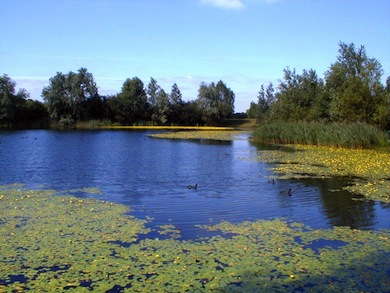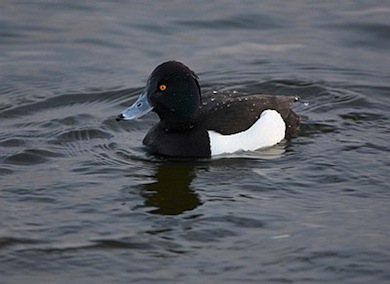This is a large site divided into two sections, consisting of some varied ancient woodland and three recently created lakes. Also included are sections of the Running Water Brook. The most important woodland type is the seasonally flooded area dominated by alder, although drier areas support pedunculate oak, field maple, hornbeam and wild service-tree.Part of the site is within a country park managed by Essex County Council, which won a Green Flag Award again for 20089. Havering Walking the Way to Health (WHI) uses this site; see link for details.
Local Wildlife Site
Accessible Sites of Importance for Nature Conservation
Belhus Woods
Borough: Havering
Grade: Metropolitan
Access: Free public access (all/most of site)
Area: 30.85 ha
Description
Wildlife
In drier woodland the ground-level vegetation is dominated by bluebell, with the locally scarce species early purple-orchid, lily-of-the-valley and butcher's-broom. In wetter areas cyperus sedge dominates.The edges of the eastern lake support a narrow fringe of common reed, with the London rarity fine-leaved water-dropwort and both species of reedmace (greater and lesser) together with their hybrid. The southern lake supports wetland plants that typically re-colonise wasteland areas. Here are many regionally uncommon species, including golden and marsh docks, common water-crowfoot and pink water-speedwell. The banks of the northern lake and the island within it support more woody vegetation, predominantly of willows.The breeding bird population includes all three British woodpeckers, little ringed plover, shelduck, pochard, lapwing and redshank. Running Water Brook supports the specially-protected water vole.Facilities
Information (visitor information centre in the country park); fishing; shop; refreshments; toilets (including baby changing facilities); picnic and barbecue areas; car parking; nature trail.
View over Belhus Lake © Tony Gunton

Tufted duck, drake © Jason Gallier
Feedback
Have a question or a comment for this site, or notice anything missing or out of date? Please contact us.
